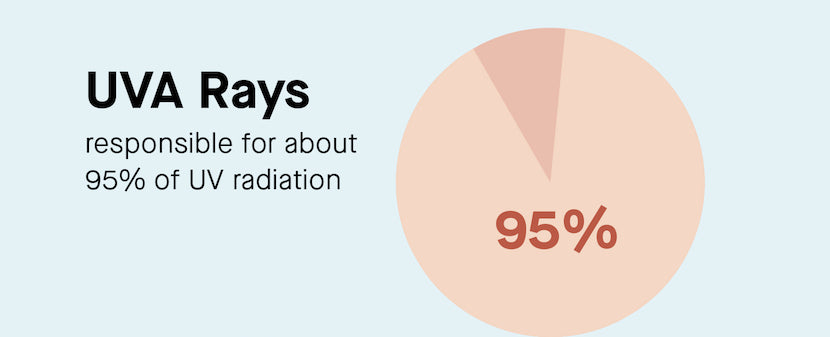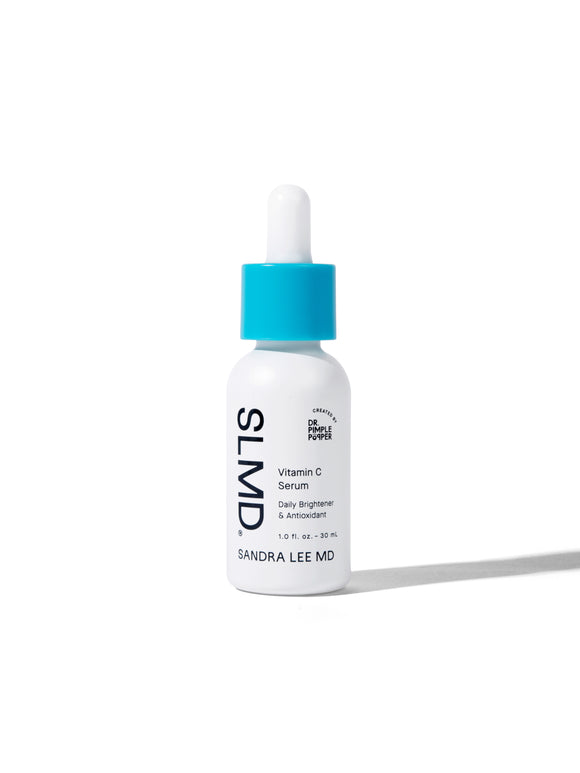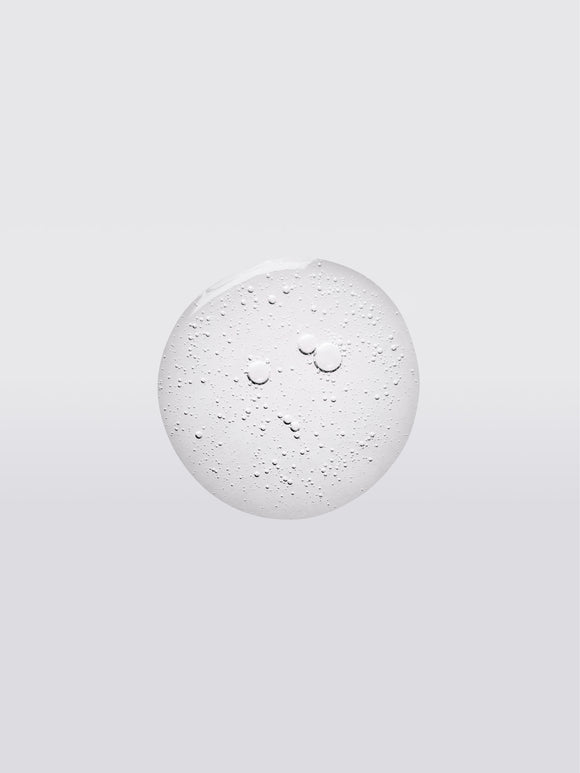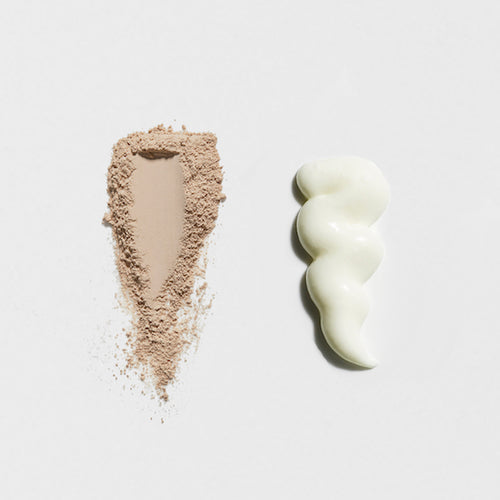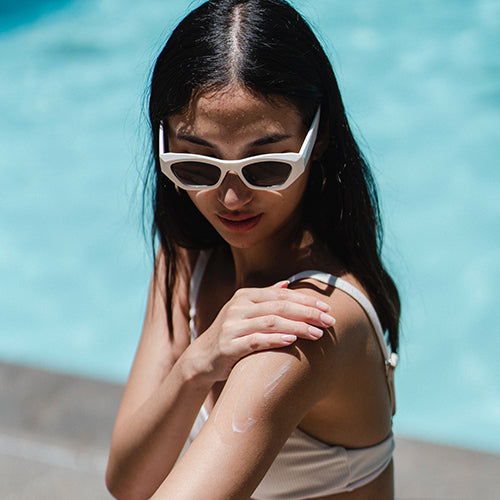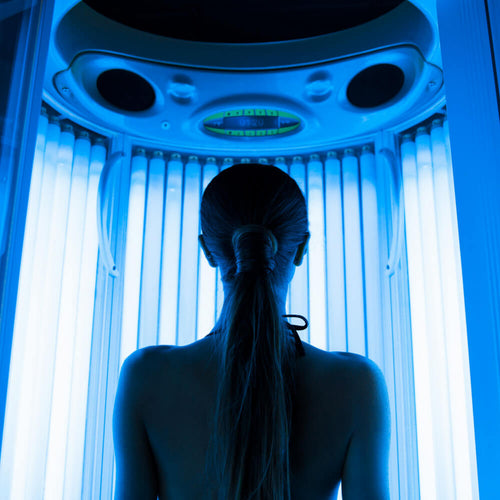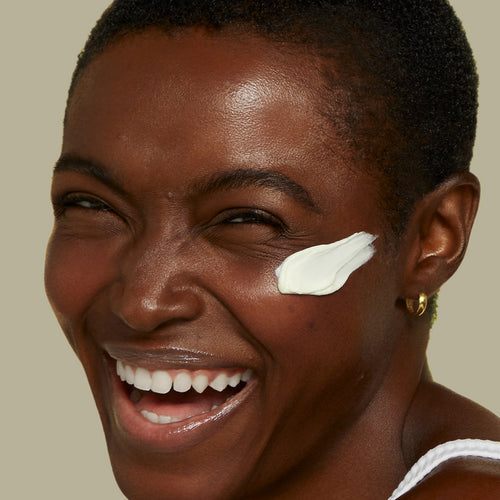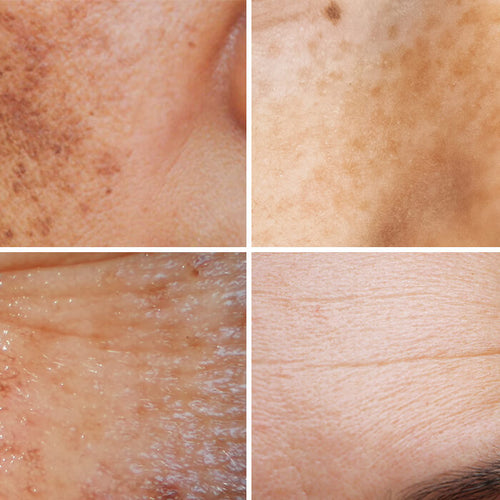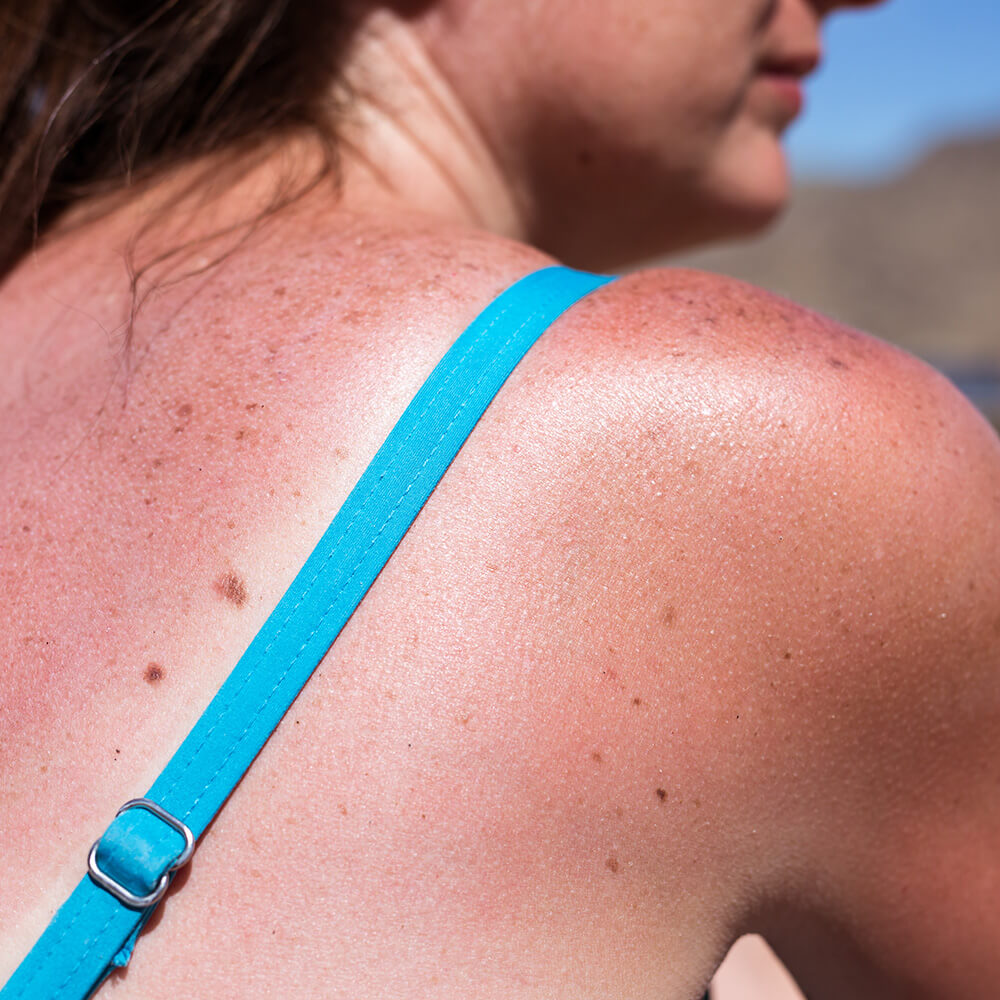
UVA vs. UVB Rays: What's The Difference?
Not all rays are created equal. Learn what to do to protect your skin from all types of UV damage.Published:
3 minute read
By this point, you probably know that you should be wearing sunscreen not just when you’re in the sun, but any time you leave the house. Of course there’s knowing — and then there’s doing, right?
It’s understandable: it can be hard to prioritize protecting yourself from something you can’t even see. While the effects of spending the day in the sun without SPF are immediate — hello, painful sunburn — the scope of potential radiation damage isn’t obvious right away.
This is because UV rays aren’t all alike, and they affect your skin in specific ways. Here, we’re breaking down the difference between UVA and UVB rays.
Article Quick Links
- 01.What are UV rays?
- 02.UVA rays
- 03.UVB rays
- 04.Which UV rays cause cancer?
What are UV rays?
UV light (short for ultraviolet) is a type of electromagnetic radiation from the sun. It’s on the same spectrum as visible light rays, but UV light has a shorter wavelength so we can’t see it with the naked eye.
If you picture the colors of the rainbow, imagine that there is actually light (radiation) that extends beyond either side. Light beyond the red color is known as infrared, while light beyond the violet side is ultraviolet. Moving from longer to shorter wavelengths, there are three types of UV light: UVA and UVB rays reach the Earth’s surface, while UVC rays are absorbed by the atmosphere and thus don’t affect us.

UVA rays
Nearly 95% of the UV radiation that reaches the earth’s surface are UVA rays. They are consistently present during all hours of daylight in every season and can seep through many substances, most notably cloud coverage and glass. Yep, you read that right — clouds and car windows don’t actually prevent UVA rays from reaching your skin.
UVA rays penetrate skin more deeply than UVB rays, beyond the epidermis (the skin’s outermost layer) and into the dermis (the skin’s second layer). They’re what help us tan, but they’re also what causes signs of aging like wrinkles and fine lines.
When UVA light reaches our epidermis, it damages the basal and squamous cells (called keratinocytes) in the skin’s basal layer. This is where most skin cancers occur, and damage from UVA rays is known to initiate the development of those cancers.
UVB rays
UVB rays, on the other hand, primarily cause damage in the epidermis, or the top layer of the skin. They are responsible for causing that painful redness we call a sunburn and play a significant role in causing damage to the skin’s surface. Over time, they can also cause cancer.
UVB rays can reach the earth’s surface (especially high altitudes) throughout the year, but if you are living in the U.S., they are most likely to affect your skin between the hours of 10 a.m. and 4 p.m. during the spring, summer and early fall.
Which UV rays cause cancer?
In a matchup of UVA versus UVB rays, which are the most dangerous? The short answer is that they both are, but in different ways. While UVB rays can cause visible damage in the short term — leaving you with an uncomfortable burn — UVA rays cause damage in the long run by expediting cellular aging. In other words, too much exposure to either UVA or UVB rays can cause skin cancer.
It’s worth noting that skin cancer isn’t the only harmful side effect of UV radiation. Find out exactly what sun exposure does to your skin here.
How do I protect myself from UV rays?
Luckily, the answer is pretty simple: by choosing a sunscreen that’s broad spectrum or full spectrum — which means that its formula targets both UVA and UVB rays. Look for ingredients like:
- UVA rays: avobenzone, titanium dioxide
- UVB rays: homosalate, octisalate, zinc oxide
SLMD Dual Defender SPF 30 is a moisturizer combined with a chemical sunscreen, and is formulated with acne-prone skin in mind.
With any sunscreen you choose, remember to reapply frequently, since all sun protection degrades when exposed to UV rays.
Incorporating antioxidants into your skincare routine can also help boost the protective effects of your sunscreen. Look for vitamin C, ferulic acid, kojic acid and niacinamide, which all help neutralize the effects of free radicals produced in response to UV exposure.
SLMD Vitamin C Serum brightens the skin's appearance, while Dark Spot Fix fades the look of hyperpigmentation from UV damage and healing acne.

Dr. Lee's Last Word
Here’s a handy way to remember what kind of sun damage UV radiation causes: UVA rays are mainly responsible for skin aging, while UVB rays are the ones that cause our skin to burn. That’s why you need a broad spectrum sunscreen…everyday!



